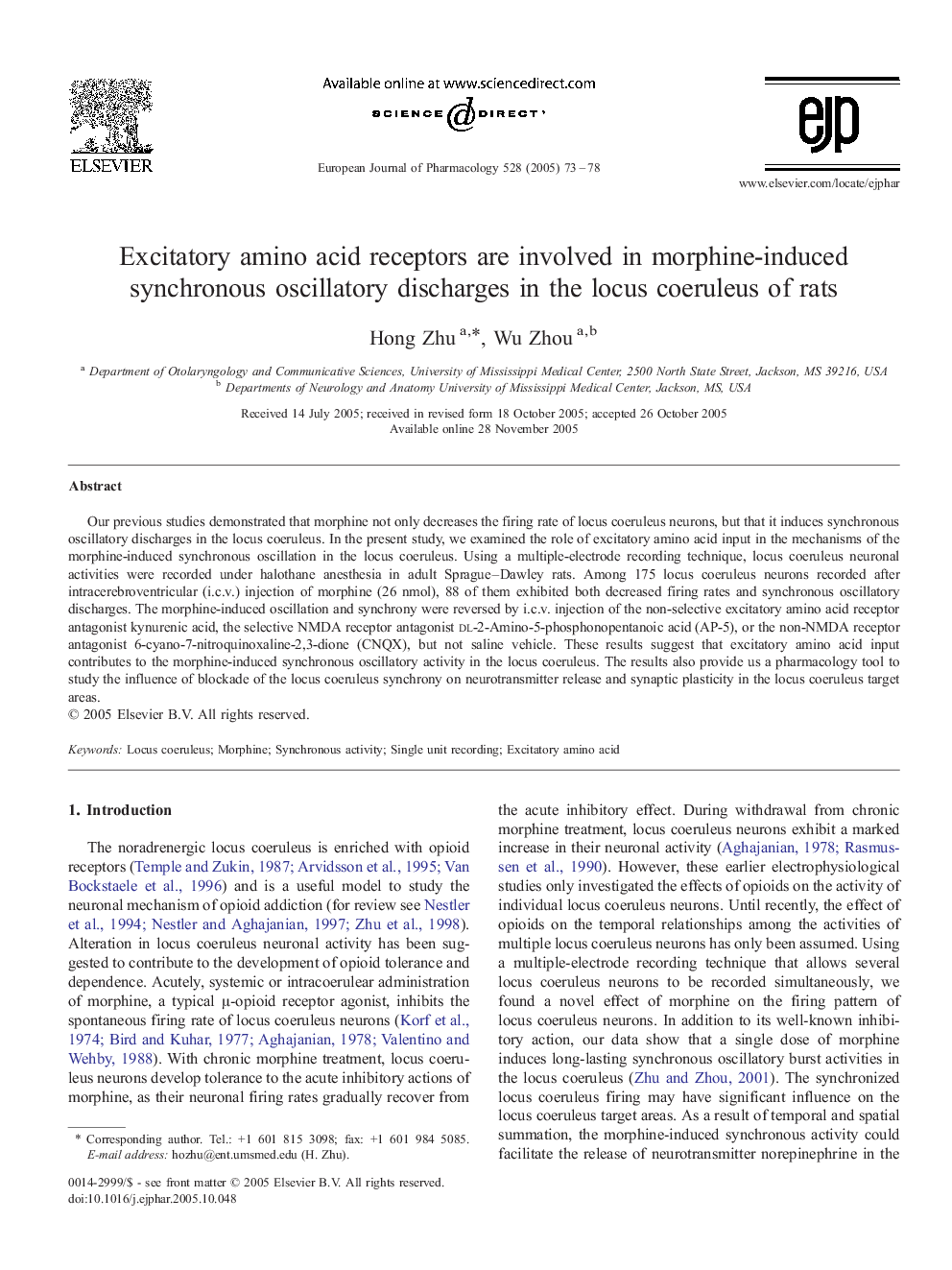| Article ID | Journal | Published Year | Pages | File Type |
|---|---|---|---|---|
| 9920906 | European Journal of Pharmacology | 2005 | 6 Pages |
Abstract
Our previous studies demonstrated that morphine not only decreases the firing rate of locus coeruleus neurons, but that it induces synchronous oscillatory discharges in the locus coeruleus. In the present study, we examined the role of excitatory amino acid input in the mechanisms of the morphine-induced synchronous oscillation in the locus coeruleus. Using a multiple-electrode recording technique, locus coeruleus neuronal activities were recorded under halothane anesthesia in adult Sprague-Dawley rats. Among 175 locus coeruleus neurons recorded after intracerebroventricular (i.c.v.) injection of morphine (26 nmol), 88 of them exhibited both decreased firing rates and synchronous oscillatory discharges. The morphine-induced oscillation and synchrony were reversed by i.c.v. injection of the non-selective excitatory amino acid receptor antagonist kynurenic acid, the selective NMDA receptor antagonist dl-2-Amino-5-phosphonopentanoic acid (AP-5), or the non-NMDA receptor antagonist 6-cyano-7-nitroquinoxaline-2,3-dione (CNQX), but not saline vehicle. These results suggest that excitatory amino acid input contributes to the morphine-induced synchronous oscillatory activity in the locus coeruleus. The results also provide us a pharmacology tool to study the influence of blockade of the locus coeruleus synchrony on neurotransmitter release and synaptic plasticity in the locus coeruleus target areas.
Related Topics
Life Sciences
Neuroscience
Cellular and Molecular Neuroscience
Authors
Hong Zhu, Wu Zhou,
